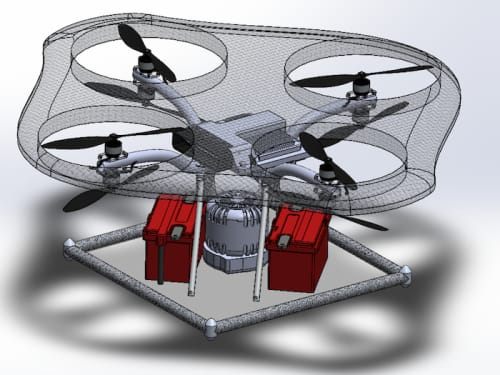2016
Aerospace & Defense
My design is of an aircraft named LA-95, which is constructed from an alloy of Lithium and Aluminum and has a double turbo fan system, along with Pratt and Whitney F119 engine network. Below mentioned, in detail are some of the changes designed which are developed differently from other jet engines to enable faster means of travel.
Problem Statement
Thrust developed by engines of an aircraft is used to propel it in a forward direction. Its size or wing size that produces the required lift force to fulfill the need to hover a plane against the force of gravity is proportional to payload or overall weight.
The project is connected with a new approach for drone range/operating time improvement by using an Ecological LPG powered onboard micro power genset.
The frame is contructed in a way that tubes incorporate LPG tank - shaped in a way not to influence the flight control.
The Problem:
Conventional aircraft make use of elliptical wings to minimize drag. However, achieving
aircraft stability and control in conventional elliptical wings requires a strong adverse
yaw component in roll control (i.e., the aircraft will yaw the opposite direction with
application of roll control). Therefore, a vertical tail or some other method of direct yaw
There is exiguity and lots of difficulties in alternative methods which represent satellites services and its implements, according to the high cost of sending and operating satellites. Specifically in the fields of Telecommunications, Research, wild life, Geographic surveying, civilian spying and cities security. My innovation idea aims to provide a sustainable solutions for using satellites.
This particular Nuclear Powered Aircraft uses heat generated during Nuclear Fission to generate steam from stored water.
The nuclear fission is performed on a low weight radioactive material like Iodine. The heat so released is used to convert water into steam, which in turn drives the turbine.
Introduction
Today space debris traffic is one of the most critical concerns for space researchers. The current population of space debris is divided into small fragmentation debris of about 42 %, satellite and rocket bodies debris of about 17 % and dead spacecraft debris of about 31 %.
The new P.A.W.N.
Passive method for flying objects detection
This idea for detection flying objects in atmosphere are going from probabilistic and statistical analysis of received cosmic radiation, usually perceived as “cosmic noise.”
Using a spreaded cosmic radiation directional receiver network and a central computer system for data analysis, in conjunction with previously received data,
Page 6 of 9









